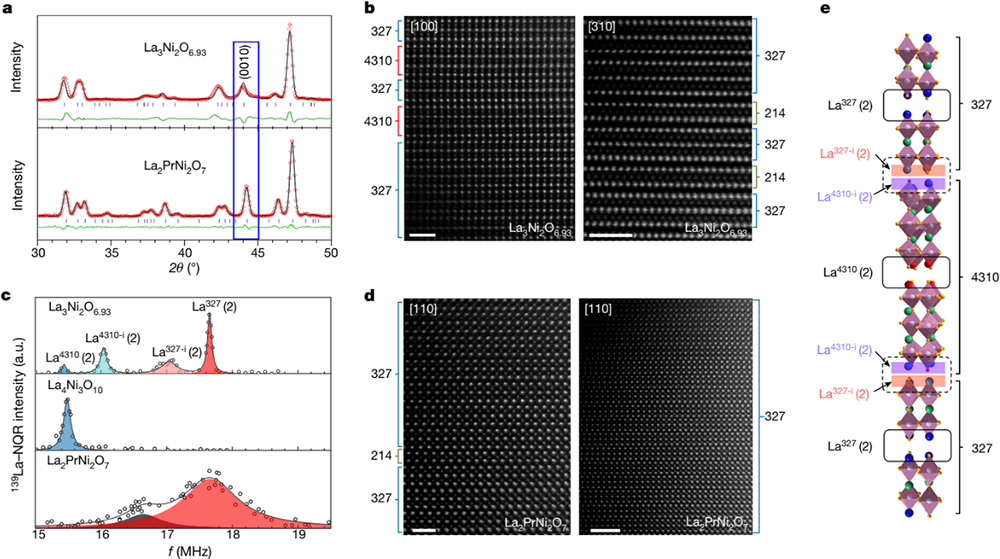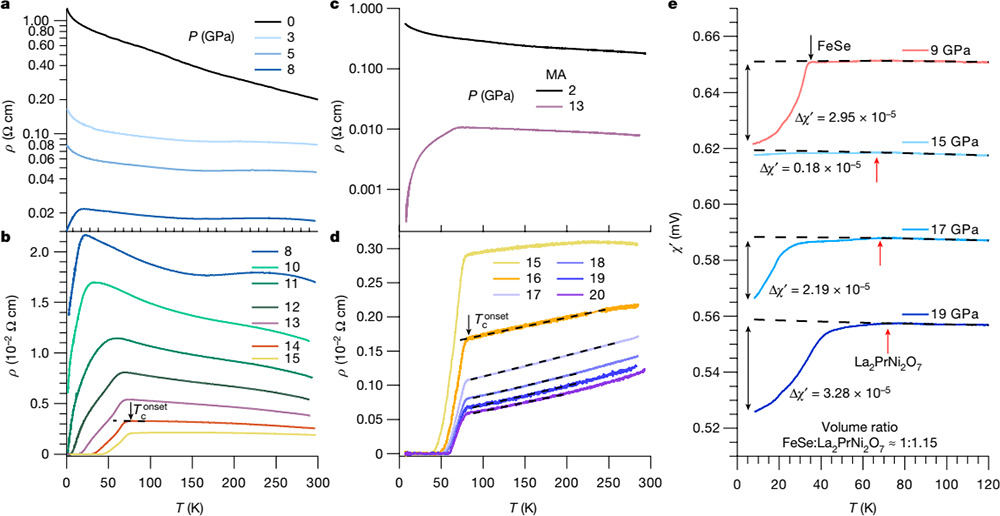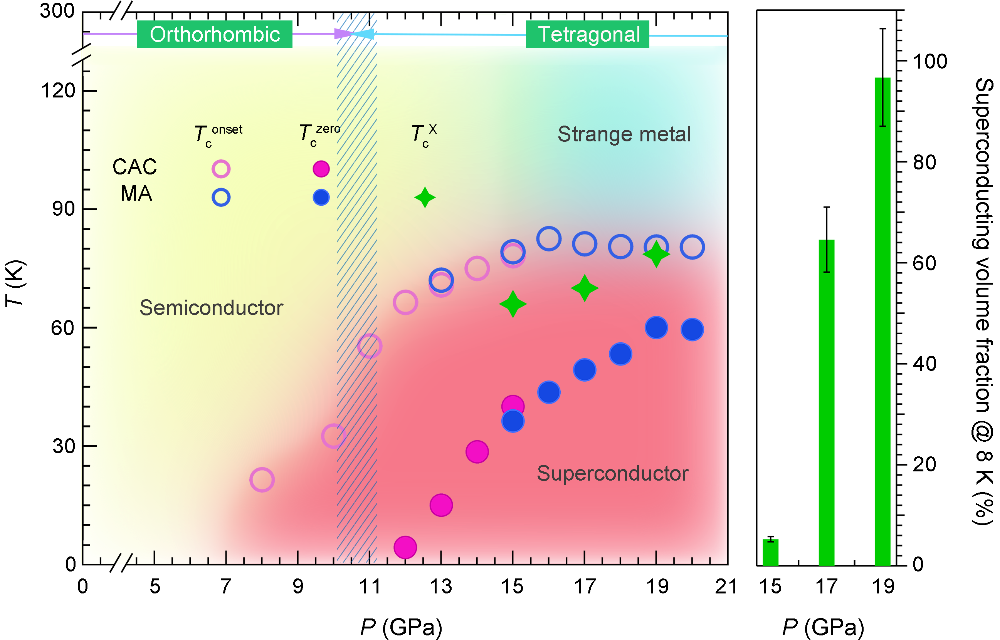Bulk High-temperature Superconductivity Achieved in La2PrNi2O7 under High Pressure
Date:30-09-2024 Print
Recently, signatures of high-temperature superconductivity (HTSC) with Tc ≈ 80K were found at pressures above 14GPa in the crystals of La3Ni2O7, which is the n = 2 member of the Ruddlesden-Popper (R-P) nickelate oxides denoted as Lan+1NinO3n+1 (n = 1, 2, 3, …,∞). This discovery has immediately attracted tremendous research interest as a new family of HTSC. However, subsequent studies revealed that the La3Ni2O7 single crystals grown with the optical-image floating-zone method under moderate oxygen pressure present some sample-quality issues such as the chemical inhomogeneity, oxygen vacancy, and the coexistence of minority monolayer (n=1, 214) and trilayer (n=3, 4310) R-P phases. These complications lead to significant sample-dependent behaviors of existing experiments and the absence of direct experimental evidence for bulk HTSC in the bilayer nickelate La3Ni2O7. Thus, achieving bulk HTSC and identifying the exact phase at play are the most prominent tasks at present.
In light of these challenges, a collaborative team led by Jinguang Cheng from the Institute of Physics, Chinese Academy of Sciences, resorted to the polycrystalline samples of bilayer nickelates La3-xPrxNi2O7-δ, which can be prepared in a relatively large quantity with better controlled quality and reproducibility via wet-chemistry sol-gel method. They found that the above-mentioned sample-quality issues of La3Ni2O7 can be effectively resolved via substitution of smaller Pr ions for La, leading to the successful synthesis of high-purity La2PrNi2O7 with an ideal bilayer R-P structure (Fig. 1). This sample undergoes a pressure-induced structural transition from orthorhombic Amam to tetragonal I4/mmm at Pc ≈ 11GPa (Fig. 2). Their combined resistivity and ac magnetic susceptibility measurements under hydrostatic pressures provided the key evidence of bulk HTSC, including the zero resistance with high Tconset = 82.5K and Tczero = 60K and the clear diamagnetic response with a superconducting shielding volume fraction of 97% (Figs. 3, 4). In addition, by employing a suite of experimental techniques, they demonstrate the structural disorders as unfavorable factors for HTSC of La3Ni2O7. These results provide critical experimental evidence for bulk HTSC in the pressurized La2PrNi2O7, confirming the bilayer R-P phase as the source of HTSC and revealing the intergrowths of 327/4310 and 327/214 phases as detrimental factors for bulk HTSC in the La3Ni2O7-δ.
This work not only resolves the existing controversies but also highlights pathways for further exploration of bulk HTSC in bilayer nickelates, providing valuable guidance for the optimization and synthesis of nickel-based high-temperature superconductors.
This study entitled “Bulk High-Temperature Superconductivity in Pressurized Tetragonal La₂PrNi₂O7” was published on Nature.
The study was supported by the National Science Foundation, the Ministry of Science and Technology of China and the Chinese Academy of Sciences.

Fig.1 Characterizations on the micro-structures of La3-xPrxNi2O7-δ (x = 0, 1) samples. (Image by Institute of Physics)

Fig.2 Pressure-induced structural transition in La2PrNi2O7. (Image by Institute of Physics)

Fig.3 Pressure-induced HTSC in La2PrNi2O7. (Image by Institute of Physics)

Fig.4 The T-P phase diagram of La2PrNi2O7. (Image by Institute of Physics)
Contact:
Institute of Physics
Jinguang Cheng
Email:jgcheng@iphy.ac.cn
Key words:
High-temperature superconductivity; Nickelate superconductor; La2PrNi2O7; High pressure;
Abstract:
By partially substituting La with smaller Pr in La2PrNi2O7, a collaborative team led by Jin-Guang Cheng successfully eliminates the competing Ruddlesden–Popper (R–P) phases and the inner apical oxygen vacancies in the bilayer nickelate La3Ni2O7-δ. For the high-purity La2PrNi2O7, bulk high-temperature superconductivity (HTSC) with appreciable superconducting shielding volume fraction fsc was achieved in the high-pressure tetragonal phase. The observed optimal superconducting transition temperatures Tconset = 82.5K and Tczero = 60K in La2PrNi2O7 are the highest values among existing nickelate superconductors reported so far. These findings not only resolve the existing controversies but also provide directions for exploring bulk HTSC in the bilayer nickelates.

